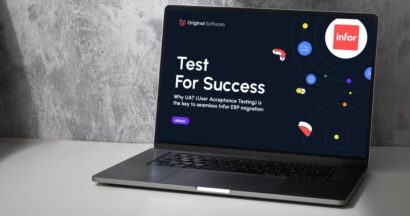An introduction to UAT
User Acceptance Testing (UAT) is inevitably near the end of any software change cycle, and it performs a number of key objectives in the overall software quality process. It serves to ensure that the software is usable, safe, understood, and meets the objectives laid out in the first instance.
More than just ‘acceptance’
The word ‘acceptance’ has become less important in most current forms of UAT as it is not typically used to ‘accept’ the software or system against a set of acceptance criteria, more it is an additional set of checks and, at the same time provides familiarization and training so that the implementation is smooth and successful.
Organizing, managing, and executing any testing or testing project can be a substantial and daunting task, and UAT is no exception. For every project that UAT is implemented in, there are unique challenges and factors to consider. However, the effort is worth it, and in many cases, essential for the project’s success and saving time and money in the long run.

However, these results depend entirely on the appropriate implementation of testing and good input from users. Without this, the software’s residual errors will not be discovered, negatively impacting the change of systems or causing costly disruption and discontent internally and externally.

The costliest type of testing
Any UAT phase is likely to be the most costly type of testing undertaken due to the number of people, timescales, and repeated cycles. Hence, it is well worth optimizing this activity to get the best outcome and do it in the most efficient and cost-effective way.
This handbook looks at the potential activities that might apply to a UAT project. It provides the knowledge for putting in place frameworks that give a project the best chance of success and maximize positive outcomes from each activity and the overall project.
- What activities should apply to a UAT project?
- Gain the knowledge to put in place frameworks that give the project the best chance of success.
- Maximise the positive outcomes.
As with any testing process, not all phases need to be implemented within every project, but each should be considered to achieve the best possible outcome.
We are covering the whole approach to UAT in a step-by-step guide. You can read the next part, Scope, or any of the other sections here:
Our UAT solution makes testing faster and easier for users and managers alike. Build, test, capture and manage your tests all in one place. Reduce effort by 60% in minutes.











